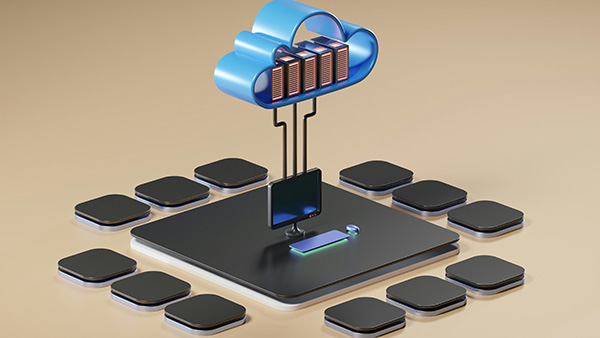Amid the destruction natural disasters bring in their wake cloud solutions emerge as indispensable tools for manufacturers to navigate the path ahead.
By Matt Heerey, President of Manufacturing, ECI Software Solutions
Recent surges in the frequency and intensity of natural disasters pose significant risks for manufacturers in the short and long term. One of the many harsh realities of these calamities is their detrimental impact on larger economic dynamics. Natural disasters aren’t isolated incidents nor are their repercussions confined. According to Forbes, between January 2013 and January 2023, 88.5% of U.S. counties declared natural disasters, encompassing 95% of the 200 most densely populated counties. Not only are problems widespread, but the effects are immense. In 2023, the United States experienced a total of 28 separate weather and climate disasters, resulting in damages of at least 1 billion dollars; the highest in a calendar year. This unfortunate trend appears unlikely to reverse, as 2023 was the fourth consecutive year in which 18 or more separate billion-dollar disaster events have impacted the United States. Rather than hope it won’t impact them, manufacturers must adjust to what is becoming the new normal.
Severe storms wreak havoc on manufacturing facilities across the automotive, chemical, plastics, and machinery sectors, disrupting various facets of the supply chain. Trucking shortages, escalating fuel costs, inflation, and power failures further hinder operations. Even after storms pass, manufacturers may experience reduced demand due to a worsened economic climate as potential customers are adversely affected financially from their own damages and losses. Amid the destruction natural disasters bring in their wake, cloud solutions emerge as indispensable tools for manufacturers to navigate the path ahead.
When disasters strike, businesses utilizing on-premise servers can immediately suffer severe disruption due to physical damage. High winds and floods pose significant threats to server facilities, while power outages impede access to critical data and continuity of business applications. Challenges don’t always stop following initial damage, they can persist even after the storms subside. Inaccessible facilities delay technicians’ efforts to retrieve and restore data, prolonging downtime. Repairing or replacing damaged hardware, coupled with infrastructure rebuilding time, compounds financial strain. Without remote data and application access, employees are unable to work effectively during disaster recovery, elongating and exacerbating consequences.
Given that multiple challenges often arise simultaneously during and after natural disasters and the long tail of the impacts can swing widely, manufacturers struggle to swiftly return to full operations following a major event. Amid broader infrastructure and economic challenges, organizations cannot afford additional internal hurdles. Failure to embrace cloud technologies risks both financial losses and reputational harm that comes from prolonged periods of absence.

Cloud-based systems help manufacturers maintain connectivity and data security amidst disaster. Solutions offer respite from the vulnerabilities inherent in on-premise setups. A cloud-based enterprise resource planning (ERP) system effectively safeguards businesses’ IT infrastructure and data servers from physical destruction. Unlike on-premise servers susceptible to natural disasters, a cloud-based ERP system stores valuable data in secure, remote locations, mitigating potential disaster-related damage and making it possible for manufacturers to preempt damage and data loss.
Centralizing data and systems helps expedite the recovery process, enabling employees to swiftly resume work via internet-connected devices. With critical data securely stored in the cloud, even if the physical office sustains damage, the data remains intact elsewhere. Business continuity— even in the face of natural disasters—becomes achievable through the cloud.
Data migration typically involves consolidating data from various systems, formats, and storage types into a unified, standardized structure—a daunting task without the right plan. It’s important to roadmap transitioning to a secure and resilient data setup.
Firstly, selecting an ERP vendor with expertise in data migration, compatibility with existing IT infrastructure, implementation methodology, support services, and scalability—is essential for a successful cloud migration. Next, it’s important to identify relevant data; determine key sources, including on-site servers, external drives, or previous cloud-based business software systems. Include essential master, historical, and transactional data based on accuracy and value.
Once an ERP vendor has been selected and data sources chosen – manufacturers must turn their focus to mapping the data. Manufacturers should collaborate with vendors to align data to the ERP database structure before importing. Harmony between source and target data ensures seamless transfer. To execute the migration, manufacturers must transform data into a suitable format and load it into the new ERP system, leveraging vendor support for a smooth transition. The final initial step is to validate and test. Verify completeness and accuracy by comparing migrated data with the source to ensure seamless integration. Once validated, the ERP system is ready for use.
By adopting a cloud-based ERP solution, manufacturers can shield themselves against infrastructure damage, data loss, and ensuing complications, to achieve continual, uninterrupted operations. While natural disasters pose a significant threat, their impact on manufacturers’ data can be mitigated through proactive approaches. Turning to cloud solutions continues to be an important transition in the evolution of manufacturing. Failing to adapt and protect data with agile solutions risks manufacturers falling behind the pack. Upgrading to solutions that provide clarity and security from nearly anywhere can be a true competitive differentiation.

Matt Heerey is President of Manufacturing, ECI Software Solutions.
In this episode, I sat down with Beejan Giga, Director | Partner and Caleb Emerson, Senior Results Manager at Carpedia International. We discussed the insights behind their recent Industry Today article, “Thinking Three Moves Ahead” and together we explored how manufacturers can plan more strategically, align with their suppliers, and build the operational discipline needed to support intentional, sustainable growth. It was a conversation packed with practical perspectives on navigating a fast-changing industry landscape.